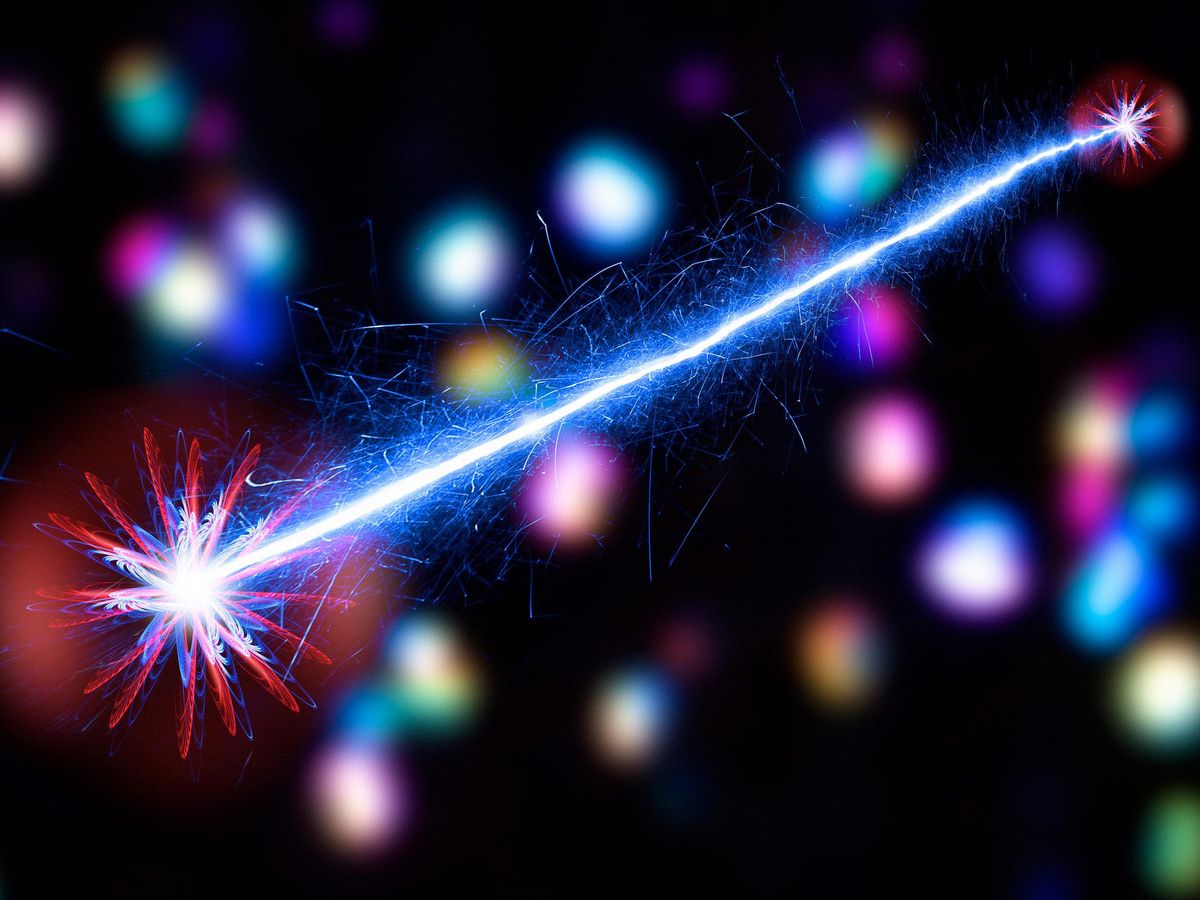Using the strange quantum phenomenon known as entanglement, which Einstein dubbed “spooky action at a distance,” a new study reveals that scientists now can network multiple quantum sensors to form one united device. The findings could improve quantum sensors for a multitude of applications, such as helping detect hidden underground resources and structures for mining and the military, researchers say.
Quantum sensors are capable of performing tasks such as detecting the magnetic fields of thoughts with unprecedented levels of sensitivity. These devices rely on quantum effects such as entanglement, wherein multiple particles essentially act in sync regardless of how far apart they are. Quantum effects are incredibly vulnerable to outside interference, a fact that quantum sensors capitalize on to help detect the slightest disturbances in their surroundings.
Just as quantum sensors can probe the magnetic, thermal and other features of the world in extraordinary detail, so too do atomic clocks help measure time with exquisite accuracy. Whereas grandfather clocks keep time by tracking swinging pendulums, atomic clocks monitor the quantum vibrations of atoms. Atomic clocks are the most precise timepieces ever made—currently, the best atomic clock is so accurate, it will essentially lose just one second every 300 billion years.
Now, for the first time, scientists have entangled atoms for use in networked quantum sensors—specifically, atomic clocks and quantum versions of the accelerometers now often found in smartphones. Compared to a setup that did not use entanglement, they found their time readings and acceleration measurements were 3.5 and 1.2 times more precise, respectively.
A potential application of this new work is a better accelerometer with which to map the strength of Earth’s gravitational field. Gravity mapping can help analyze features hidden underground for applications ranging from probing groundwater conditions to hunting for dark matter, says study senior author Mark Kasevich, a physicist at Stanford University in California.
“This work provides a template for future practical sensors for science and technology that will exploit entanglement to improve their precision,” Kasevich says.
In the new study, researchers experimented with rubidium atoms trapped inside a cavity and separated into two groups of about 100,000 atoms each. The groups of atoms, each cooled to 25 millionths of a degree above absolute zero, sat between two mirrors.
The scientists used microwave pulses to analyze the behavior of the rubidium atoms to use them as atomic clocks. They also showed that applying forces to the atoms could make them accelerate in a detectable manner, demonstrating how they could be used for accelerometry.
The researchers then made light rays reflect back and forth between the mirrors through each group of atoms. The ricocheting light entangled the atoms.
The two entangled groups of atoms behaved like two faces of a single clock, or two readings of one accelerometer. The measurements of these entangled groups of atoms can prove more precise than measurements from two separate synchronized devices. The scientists also showed they could successfully entangle up to four groups of atoms, each with about 45,000 atoms.
Atomic clocks are key to the precisely timed signals that GPS (short for global positioning system) and other GNSSs (global navigation satellite systems) rely on to help users pinpoint their own locations. However, Kasevich cautions that “GNSS applications are still a long way off” when it comes to this new entanglement research.
All the groups of atoms in the new study were separated by about 20 microns at most, or roughly one-fifth the average width of a human hair. “The next step is to increase the distance between entangled network nodes to meter-scale distances, then ultimately kilometer-scales or longer,” Kasevich says. “I view this as a modest technical challenge that could be realized in the next several years.”
The scientists detailed their findings 23 November in the journal Nature.
- New Quantum Sensor Sees Beneath the Beneath ›
- Quantum Sensors Could Quell EV Range Anxiety ›
- A Quantum of Sensing—Atomic Scale Bolsters New Sensor Boom ›
- Quantum Entanglement Camera Images Object With Photons That ... ›
- Entangled Photons Can Come Out in Webs Now ›
- Quantum Sensor Approaches Theoretical Limits ›
Charles Q. Choi is a science reporter who contributes regularly to IEEE Spectrum. He has written for Scientific American, The New York Times, Wired, and Science, among others.



